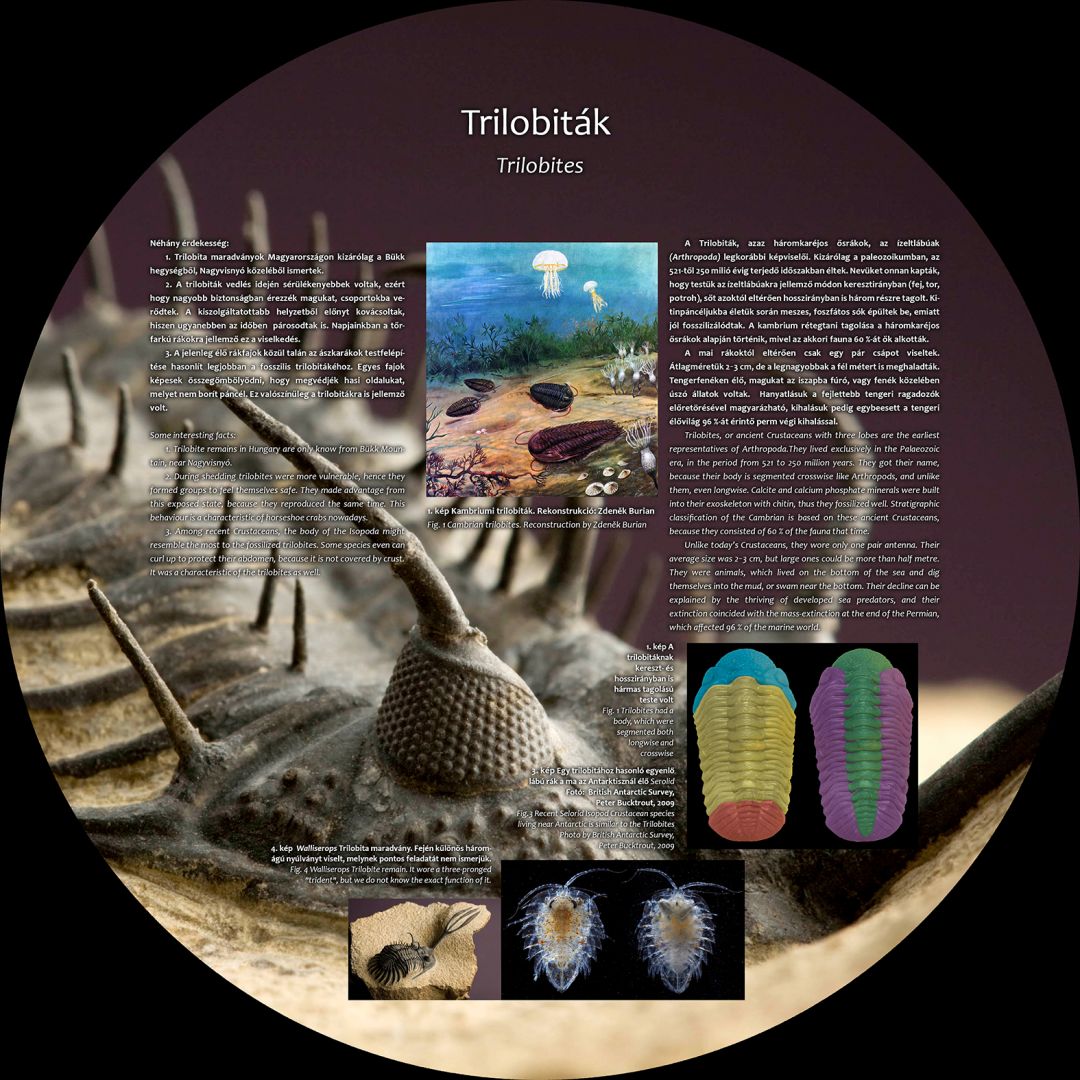GEOHISTORICAL GALERY - 2. view
Trilobites
Trilobites, or ancient Crustaceans with three lobes are the earliest representatives of Arthropoda.They lived exclusively in the Palaeozoic era, in the period from 521 to 250 million years. They got their name, because their body is segmented crosswise like Arthropods, and unlike them, even longwise. Calcite and calcium phosphate minerals were built into their exoskeleton with chitin, thus they fossilized well. Stratigraphic classification of the Cambrian is based on these ancient Crustaceans, because they consisted of 60 % of the fauna that time.
Unlike today’s Crustaceans, they wore only one pair antenna. Their average size was 2‒3 cm, but large ones could be more than half metre. They were animals, which lived on the bottom of the sea and dig themselves into the mud, or swam near the bottom. Their decline can be explained by the thriving of developed sea predators, and their extinction coincided with the mass-extinction at the end of the Permian, which affected 96 % of the marine world.
Some interesting facts:
1. Trilobite remains in Hungary are only know from Bükk Mountain, near Nagyvisnyó.
2. During shedding trilobites were more vulnerable, hence they formed groups to feel themselves safe. They made advantage from this exposed state, because they reproduced the same time. This behaviour is a characteristic of horseshoe crabs nowadays.
3. Among recent Crustaceans, the body of the Isopoda might resemble the most to the fossilized trilobites. Some species even can curl up to protect their abdomen, because it is not covered by crust. It was a characteristic of the trilobites as well.
Fig. 1 Cambrian trilobites. Reconstruction by Zdeněk Burian
Fig. 2 Trilobites had a body, which were segmented both longwise and crosswise
Fig.3 Recent Selorid Isopod Crustacean species living near Antarctic is similar to the Trilobites. Photo by British Antarctic Survey, Peter Bucktrout, 2009
Fig. 4 Walliserops Trilobite remain. It wore a three-pronged "trident", but we do not know the exact function of it.
